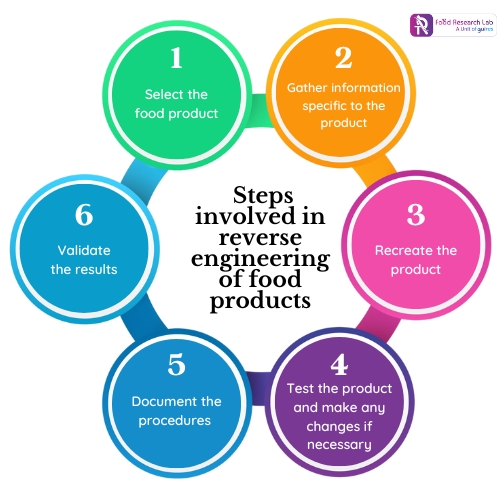
How to get started with reverse engineering of food products?
What is reverse engineering?
Reverse engineering, also known as back engineering, is a process of obtaining knowledge from a manufactured product and developing one with similar characteristics. In the food and beverage industries, reverse engineering is also called deformulation. By reverse engineering, food manufacturing start ups can learn how a product is made and update an existing product that meets consumer requirements.
The food industry must develop food products that are convenient, tasty, affordable, and meet regulatory requirements. For this purpose, they must consider the traditional methods of food product development and food processing techniques and reformulate them by reverse engineering. Food reverse engineering also helps to reduce potential risks. In addition, reverse engineering also helps in the formulation of vegan products that mimic the organoleptic properties of animal-based or dairy products, like vegan milk and cheese.
Steps involved in reverse engineering of food products.
The method for reverse engineering and redesign was first suggested by Otto and Wood in 1998. The following are the steps involved in the reverse engineering of food products:

1.Choose a food product you want to reverse engineer
The product may be formulated by a competitor or one that is successful, but you want to create a product specific to a target audience. An example of such a reverse-engineered product is the formulation of curry and marinades, specific to the Indian population living in the US and Canada.
2.Obtain information specific to the product
Begin this process by obtaining multiple samples of the product. Study the components of the product by examining the food product label, packaging, and ingredients. Take note of the ingredients mentioned on the food packaging. To understand the various proportions of the different ingredients, check the nutritional information of the food product.
The product that is to be reverse engineered must also be tested for its sensory profile. A food and beverage consultant like the Food Research Lab can help in the sensory evaluation of food and recreate the product.
3.Recreate the food product
After thoroughly analyzing the ingredients, the product can be recreated by using varying proportions of the ingredients to obtain a similar appearance, taste, and texture.
Examples of reverse engineered food products include ready to eat nutritonal bar , protein truffles and all purpose cream formulated in the Food Research Lab.
4.Test the product and make any changes if necessary
While recreating the product, test it for its sensory properties and nutritional profile. Document areas of improvement. Adjusting ingredient quantities or experimenting with different ingredients can help you improve your recipe. Evaluation of food quality is also crucial at this stage.
5.Document the procedures
Take notes of the manufacturing process involved in reverse engineering. Doing so will help you develop subsequent batches of the food products efficiently.
6.Validate the results
Compare the product with the original product from which you have reverse engineered. Conduct sensory evaluation to determine the likeness and quality of your reverse-engineered food product [1].
Conclusion
Reverse engineering involves gathering knowledge from an existing product by analysing its ingredients and nutritional profile and developing a similar one. Reverse engineering food products makes them more consumer-friendly in terms of pricing and food quality and ensures they meet the food regulations. The steps include selecting the product, analyzing the ingredients and nutritional profile, product recreation, testing, documentation, and validation. These steps help in developing a reverse-engineered product.
How the Food Research Lab can help
We are a team of food technologists and scientists offering food product development services. We help in new food product development, functional food product development, and reformulating an existing product by reverse engineering. We also provide food product development ideas for our clients that help them develop a broad range of food products like millet food products, novel food products, and natural food products. We also evaluate the food products for their quality, nutritional profile, and sensory characteristics and ensure the products developed are successful.





